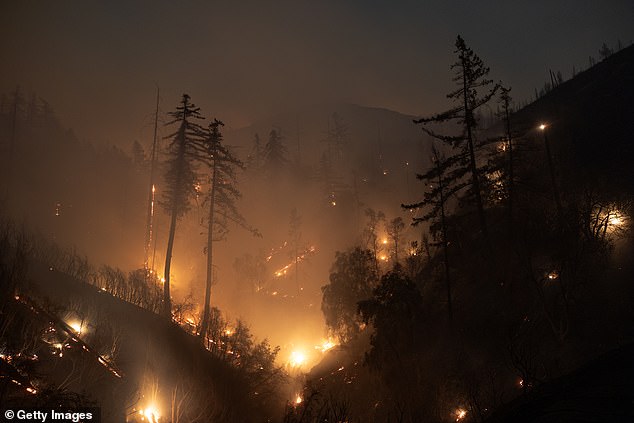Terrifying study predicts exactly how many people will DIE from climate change by 2100
A terrifying new study has predicted exactly how many people will die by 2100 due to climate change.
Researchers from the Max Planck Institute for Chemistry used advanced numerical simulations to estimate mortality due to air pollution and extreme temperatures.
Their analysis shows that as many as 30 million people could die from climate change and air pollution by the end of the century.
“In 2000, approximately 1.6 million people died annually due to extreme temperatures, both cold and heat,” says Dr. Andrea Pozzer, group leader.
‘By the end of this century, in the most likely scenario, this figure will rise to 10.8 million, roughly a sevenfold increase.
‘In terms of air pollution, annual deaths in 2000 were approximately 4.1 million.
‘By the end of this century, this number will rise to 19.5 million, a fivefold increase.’
The study comes shortly after a UN report warned that the Earth is on track for ‘catastrophic’ warming of 3.1°C this century.
Researchers from the Max Planck Institute for Chemistry used advanced numerical simulations to estimate mortality due to air pollution and extreme temperatures. Pictured: Lahore in smog on November 21

Their analysis shows that as many as 30 million people could die from climate change and air pollution by the end of the century.
The researchers based their calculations on projections from 2000 to 2090, analyzed in ten-year intervals.
Their analysis shows that there are likely to be significant regional differences in deaths caused by climate change.
South and East Asia are likely to be hardest hit, due to an aging population, with air pollution still playing a major role, the study said.
In contrast, in high-income regions such as Western Europe, North America, Australasia and Asia-Pacific The number of deaths from extreme temperatures is expected to exceed the number of deaths from air pollution.
In some countries within these regions, such as the US, England, France, Japan and New Zealand, this shift is already happening.
The experts predict that tInequality is likely to increase, with extreme temperatures becoming a greater health risk than air pollution, including in countries of Central and Eastern Europe (Poland and Romania) and parts of South America (Argentina and Chile).
By 2100, temperature-related health risks are expected to exceed those associated with air pollution for a fifth of the world’s population.
The researchers hope the findings will highlight the urgent need for action to mitigate climate change.

“In 2000, approximately 1.6 million people died annually due to extreme temperatures, both cold and heat,” says Dr. Andrea Pozzer, group leader. “By the end of this century, in the most likely scenario, this figure will rise to 10.8 million, roughly a sevenfold increase.” In the photo: wildfires in California on September 7
‘Climate change is not just an environmental problem; it is a direct threat to public health,” Dr. Pozzer said.
“These findings highlight the critical importance of implementing decisive mitigation measures now to prevent future loss of life,” added Jean Sciare, director of the Cyprus Institute’s Climate and Atmosphere Research Center.
The study comes shortly after the UN released its annual report on the emissions reductions needed to limit global warming to 1.5°C.
The report warns that this cause would be “soon dead” without a global mobilization on a scale and pace never seen before.
According to the UN, the world is on track for a temperature increase of 2.6°C to 3.1°C, depending on how much of the currently promised climate action is achieved.
Responding to the report, UN Secretary General Antonio Guterres said the world is “walking a planetary tightrope.”
“Either leaders close the emissions gap, or we plunge headlong into climate catastrophe – with the poorest and most vulnerable suffering the most,” he said.
